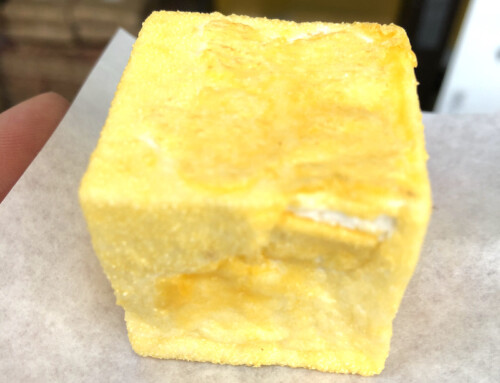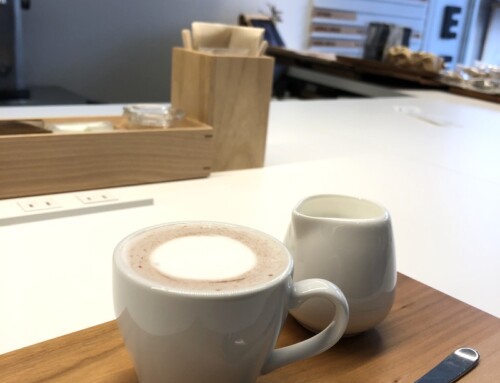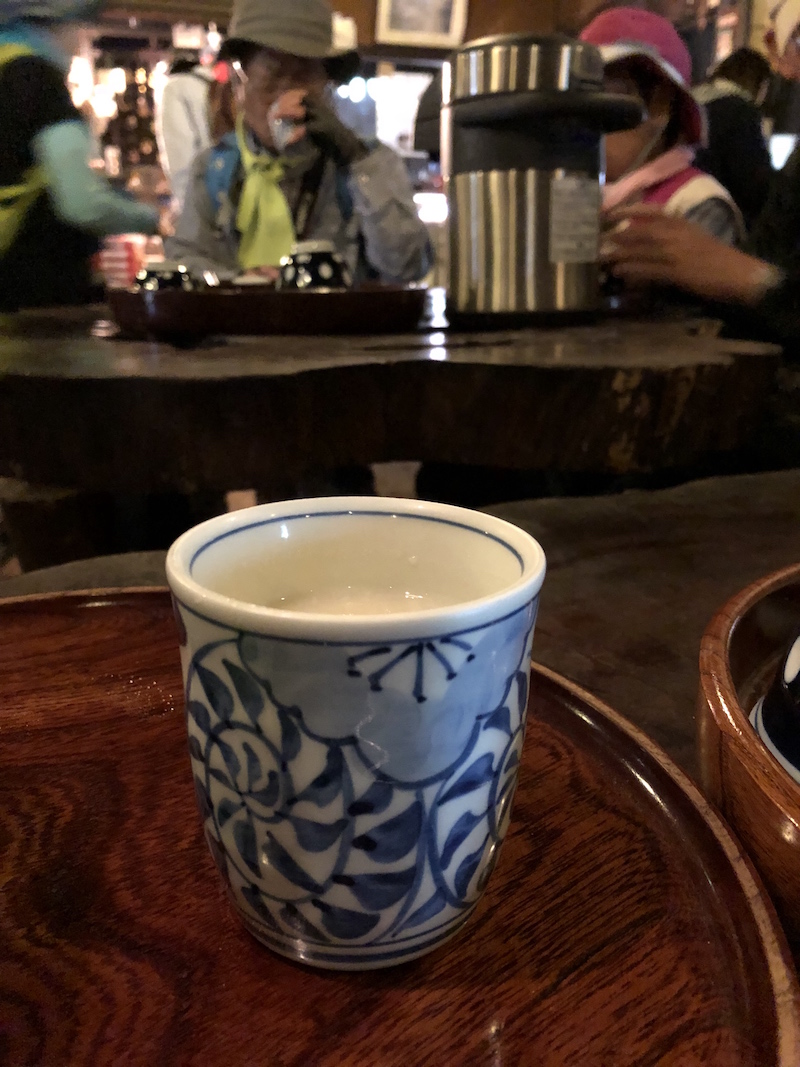
Hakone is where Tokyo, and many international tourists, including ourselves, come to relax on weekends. Once you arrive at Hakone station it feels a bit like you have been placed on a conveyer belt. Most of the visitors to Hakone will complete the Hakone loop during their stay, a 2 hour loop that takes you from Hakone first on a small train that zig zags up the hill. Then you switch to a cable car, then a gondola over some volcanic vents where you can buy black eggs cooked in the steam from sulphur vents (a real money maker considering that they are, after all, just eggs). Another cable car takes you down the mountain where you transfer to a pirate ship, yes you read that correctly. The ship takes you across a beautiful lake where you connect to a public bus that quickly, especially around corners, brings you through the hills and back to your point of origin. It is easy to just follow the flow, especially since, given Japanese efficiency, one mode of transportation leaves as soon as the last one has dropped you off. But the interest of the loop for us was really the time in between, visiting the little villages and eating their traditional sweets.
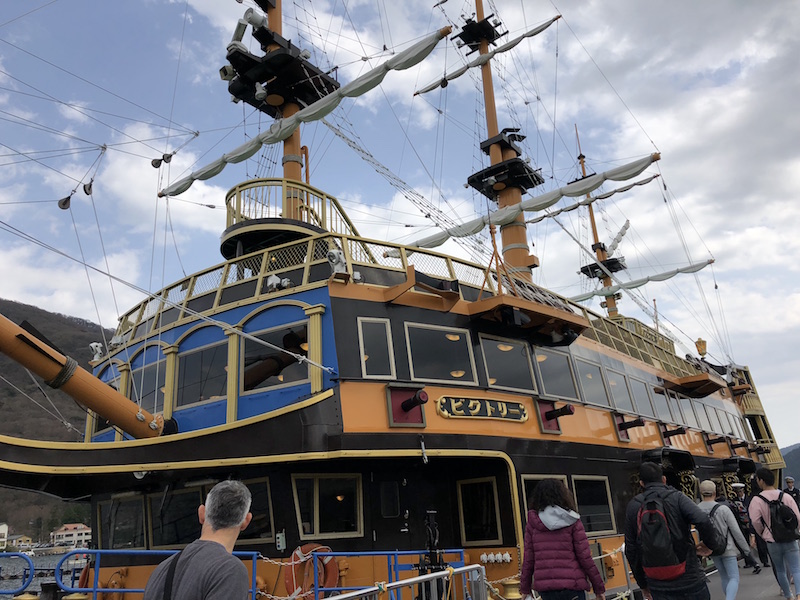
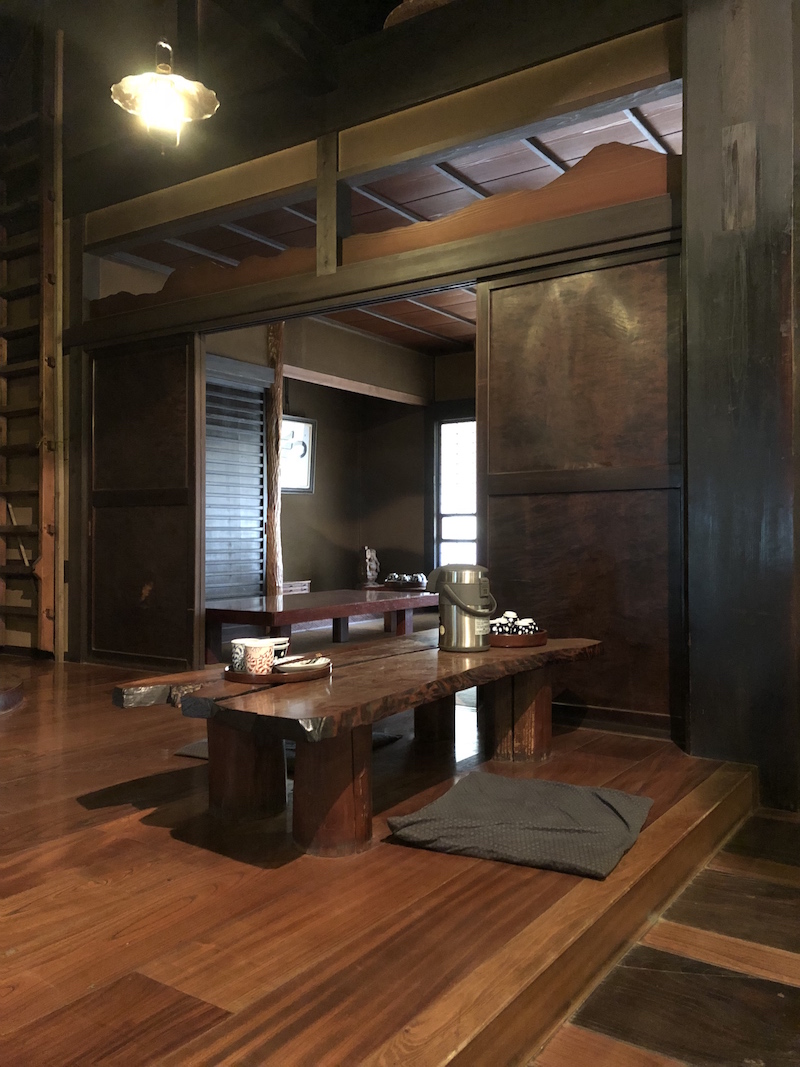
One of the main purposes of doing the loop, although I never did tell Rich about this until we were there, was 10 minutes into our bus ride back to Hakone station after our cruise across the lake. We were the only ones that got off the bus. The purpose of our stop was an old teahouse Amazake Chaya. This teahouse has been serving passers-by for the past 350 years. It is still mostly in the same state as it has been with a packed earth floor although the building itself has been burnt down and rebuilt many times. It is along the original path that linked Kyoto to Tokyo and was a regular stop of those making the trip. It is dark inside, but there is a fire lit in the corner to warm visitors. A handful of Japanese seniors entered and sat down at our table. They were keen to practice their English and tell us about how they are walking the whole path from Kyoto to Tokyo. Their reason to stop here, other than a moment of much needed rest, was to sip the house speciality, a non-alcoholic fermented rice drink served hot called amasake. It is served with warabi-mochi, a popular Kyoto confection made of rice and dusted with soy powder. The combination gave them renewed energy to continue walking and, after a quick 10 minute stop, they were on their way again.
I instantly fell in love with this drink. They describe it as baby food on their English menu and, although they do give it to babies, it doesn’t do it justice at all. It is rich and filling. There are two types of amasake Satoshi Yamamoto, the owner, tells me. The first one that is made with the lees left from sake production. These lees are dissolved in hot water and sugar is added to create an alcoholic drink (8%). The other type, which is non-alcoholic, is made from fermented rice and, similar to miso, soy sauce and sake, is made using koji mold. This type of amasake has more nutritional value than the first type and can be made at home. Satoshi listed out all of the benefits of drinking amasake, that it is considered a hangover cure in Japan and has anti-aging, improved skin, metabolism, helps with fatigue and aides in immune strengthening. Sounds pretty perfect to me.
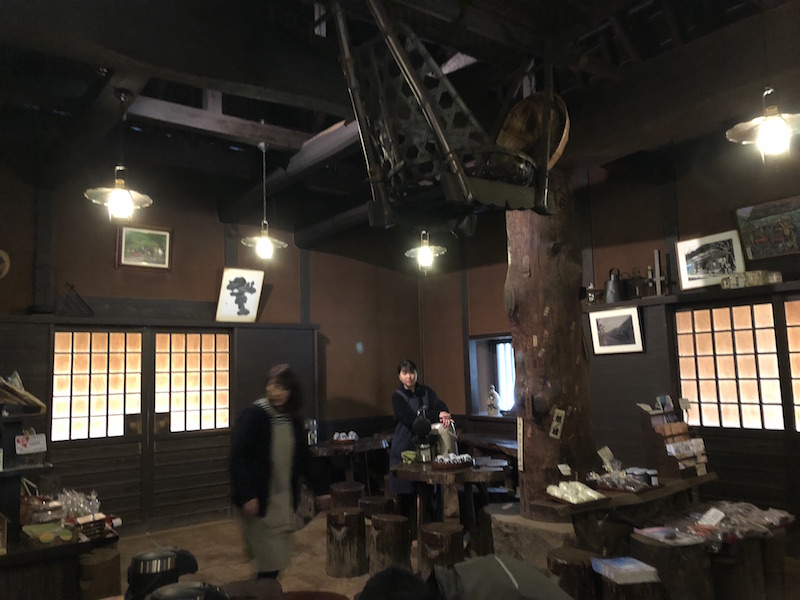



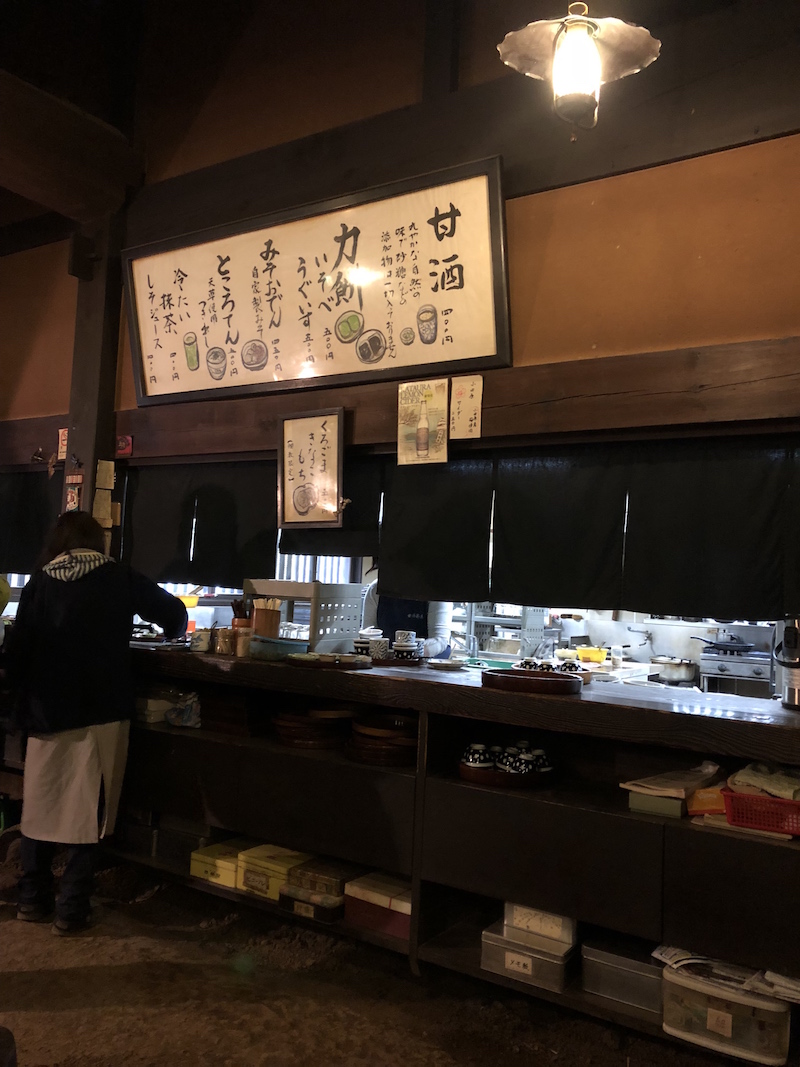
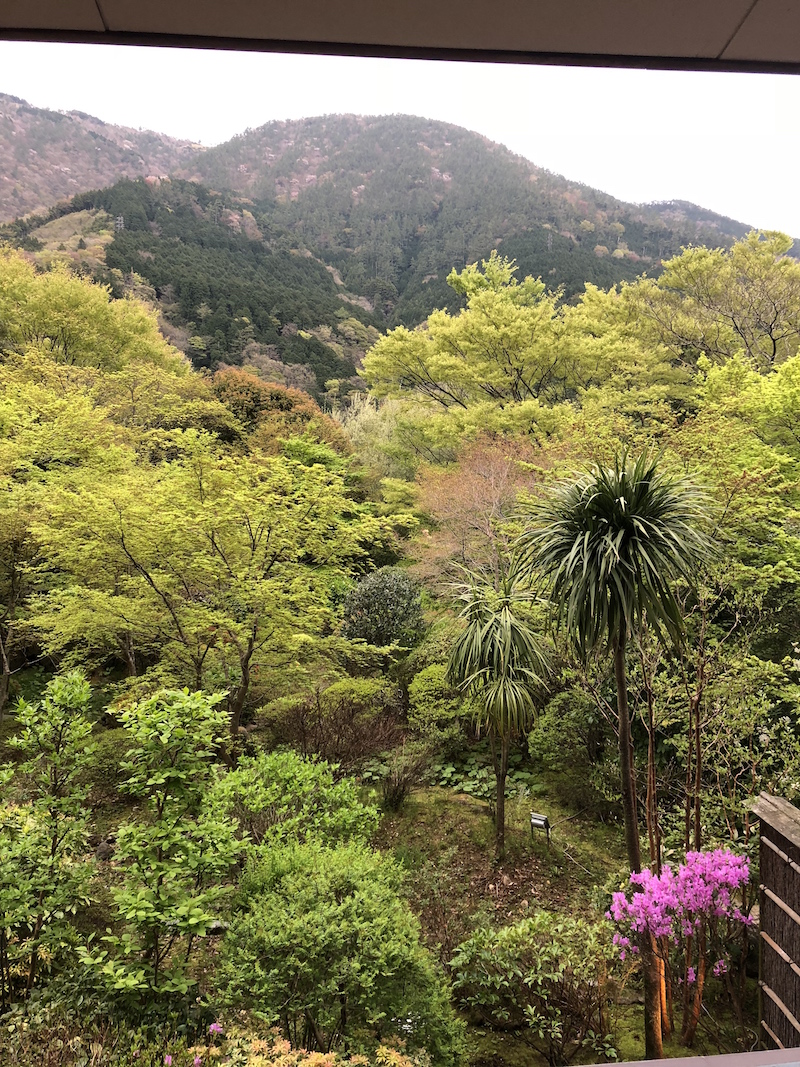

Verdict: Reason enough to visit Hakone frankly…at least for me! Plus they do speak English which makes it a bit easier to find out what their specialties are, or what the person next to you is enjoying. Amazake-chaya Tea House, Hakone, Japan




